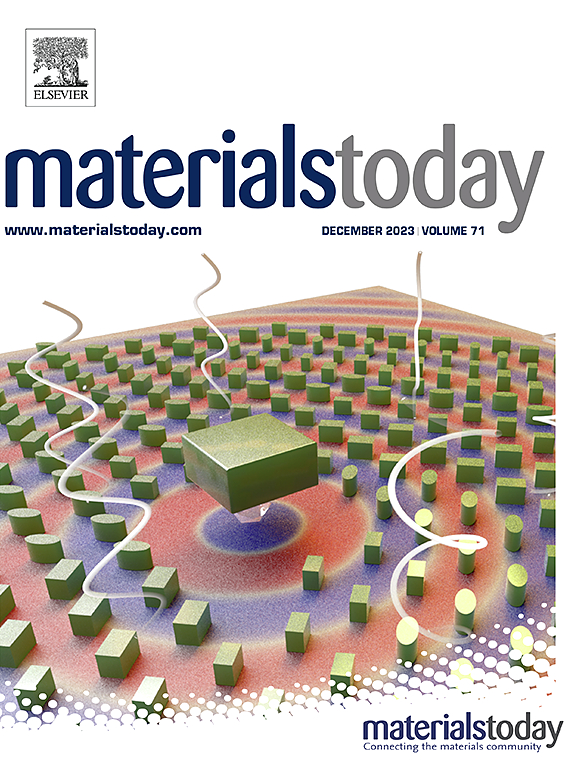半导体兼容拓扑数字合金
IF 21.1
1区 材料科学
Q1 MATERIALS SCIENCE, MULTIDISCIPLINARY
引用次数: 0
摘要
近年来,GeSn合金在直接间隙红外光子学和与半导体工业兼容的潜在拓扑材料方面引起了人们的广泛关注。然而,对于光子学,所需的高Sn含量导致低探测性,与较差的材料质量相关,并且拓扑特性所需的(> 35%) Sn在实验上已经无法达到。在这里,我们证明了通过在Ge中对Sn分布进行图图化,电子性能比随机合金具有更大的可调性。对于沿Ge[111]方向将Sn原子限制在原子层中形成的gsn δ-数字合金(DA),我们发现~ 10%的Sn可以导致三点半金属。这些发现被理解为Sn有序导致Sn和Ge带边缘的空间分离,导致带反转。这种机制也可以导致弱拓扑绝缘体,Weyl半金属,并实现可调的直接带隙低至2 meV,覆盖整个红外范围。在化合物半导体(如InAs1-xSbx)中也发现了这种DA诱导的拓扑特性,表明了在传统半导体平台上实现拓扑特性的DA设计的普遍适用性。我们的发现不仅指出了一类目前尚未开发的可通过外延获得的新型拓扑系统,而且还确立了低sn GeSn DAs在Si光子集成电路和红外图像传感器中用作红外激光二极管和光电探测器的前景。本文章由计算机程序翻译,如有差异,请以英文原文为准。
Semiconductor-compatible topological digital alloys
Recently, GeSn alloys have attracted much interest for direct-gap infrared photonics and as potential topological materials which are compatible with the semiconductor industry. However, for photonics, the high-Sn content required leads to low detectivity, associated with poor material quality, and the (>35 %) Sn required for topological properties have been out of reach experimentally. Here, we demonstrate that by patterning the Sn distribution within Ge, the electronic properties have a far greater tunability than is possible with the random alloy. For the GeSn -digital alloy (DA) formed by confining Sn atoms in atomic layer(s) along the [111] direction of Ge, we show that ∼ 10 % Sn can lead to a triple-point semimetal. These findings are understood in terms of Sn ordering causing spatial separation of Sn and Ge band edges, leading to band inversion. This mechanism can also lead to a weak topological insulator, Weyl semimetal, and enables tunable direct bandgaps down to 2 meV, covering the entire infrared range. This DA induced topological properties are also identified in compound semiconductors, such as InAs1-xSbx, showing the general applicability of the DA design for realizing topological properties on conventional semiconductor platforms. Our findings not only point to a new class of currently unexplored topological systems accessible by epitaxy, but also establish the promise of low-Sn GeSn DAs for application as infrared laser diodes and photodetectors in Si photonic integrated circuits and infrared image sensors.
求助全文
通过发布文献求助,成功后即可免费获取论文全文。
去求助
来源期刊

Materials Today
工程技术-材料科学:综合
CiteScore
36.30
自引率
1.20%
发文量
237
审稿时长
23 days
期刊介绍:
Materials Today is the leading journal in the Materials Today family, focusing on the latest and most impactful work in the materials science community. With a reputation for excellence in news and reviews, the journal has now expanded its coverage to include original research and aims to be at the forefront of the field.
We welcome comprehensive articles, short communications, and review articles from established leaders in the rapidly evolving fields of materials science and related disciplines. We strive to provide authors with rigorous peer review, fast publication, and maximum exposure for their work. While we only accept the most significant manuscripts, our speedy evaluation process ensures that there are no unnecessary publication delays.
 求助内容:
求助内容: 应助结果提醒方式:
应助结果提醒方式:


